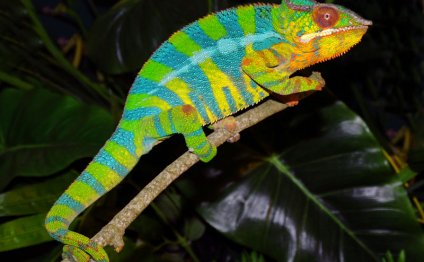
Reptile Retailers
Reptiles have only recently begun to come into vogue within the domestic pet trade, but in a few short decades, The American Pet Products Association National Pet Owners Survey shows that over 5.6 million homes in the United States have at least one scaly friend within their walls.

The reptile trade has come far since its early years. Less than 50 years ago, the vast majority of the reptile trade came simply through catching animals native to a given region. Pet stores at the time primarily sold wild-caught or imported animals, which were wild-caught themselves. Even zoos and other wildlife refuges were only just beginning to captive-breed reptiles, and few had the facilities or expertise to begin a well-designed captive-breeding program.
However, captive breeding was about to explode and change was swiftly appearing on the horizon.
Individuals interested in reptiles and amphibians were once relegated to small society meetings and hobbyist herpetological societies meeting in people’s homes and in local halls, but soon began spreading into larger and larger venues.
One example of this is the All Ohio Reptile Show, which started in a compatriot’s basement, eventually growing to take up a local VFW hall, then a National Guard Armory, now filling the Lewis Center in Columbus, Ohio once a month with reptiles of all shapes and sizes.
The Early Days
During those early individual meetings, members often attempted to cross-breed animals, seeking rare or even new colorations, patterns, and morphs. Color and pattern has always been a large part of the reptile trade. As an enthusiast, even on a rat snake you’d look for unique patterns or desirable traits that these animals might have.
The ends of these hobbyist herpetological meetings became “mini swap meets” where would-be breeders would trade animals in the hopes to create a truly unique new animal. These breeders began to sell their excess to local pet stores, as well as other reptile enthusiasts.
As one of these breeders, I began expanding my own practice during this period, initially focusing on Colubrids, a group of snakes which include corn, rat, and king snakes, then expanding into Burmese pythons and beyond. While most breeders tend to focus on one or two species, expansion boomed when I branched into selling leopard geckos in the early 1990s.
With a boom in the market, numerous reptile breeders were able to expand from simply a part-time hobby into a full-time business.
Much of this success came by establishing protocols for breeding animals throughout the full year, rather than seasonally. Reptiles by Mack was one of the first companies to breed leopard geckos year-round, rather than relying on natural cycles. This practice allows breeders to keep up with pet store demand at all times of the year, expanding their market presence to even the largest of pet store brands, while still catering to smaller, home-owned, retailers.
Reptiles by Mack, in that time, has become one of the world’s largest breeders, wholesalers, and suppliers of reptiles in the industry.
RELATED VIDEO



Share this Post
Related posts
Colorful lizard
A very large species of chameleon that is endemic to forests in eastern and northern Madagascar. They reach up to 68 cm (27…
Read MoreFriendly pet snakes
Choosing a pet snake. A large part has to do with the person s personality along with how much space and time you have to…
Read More











